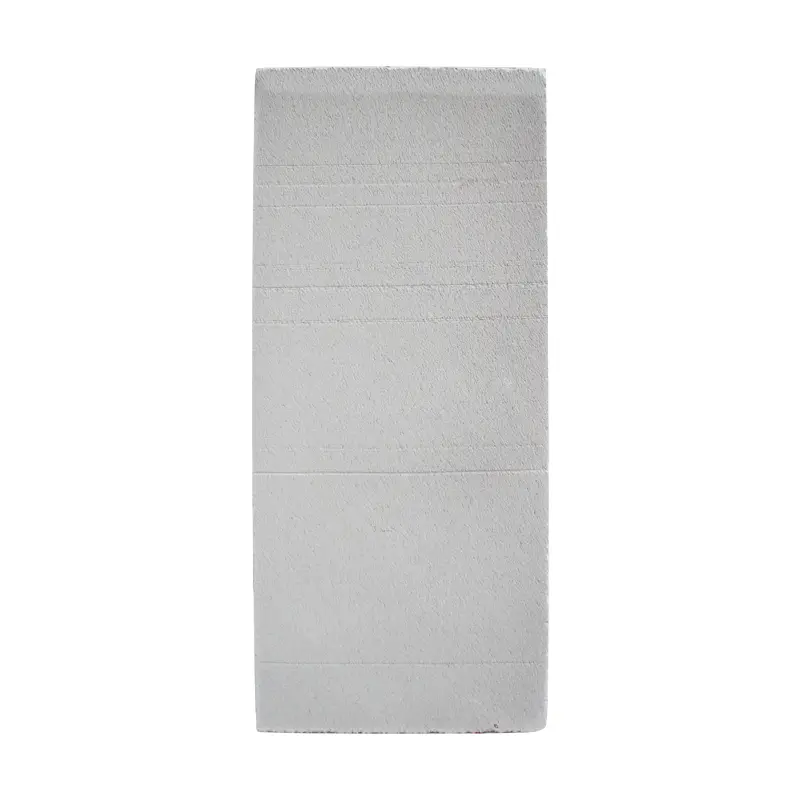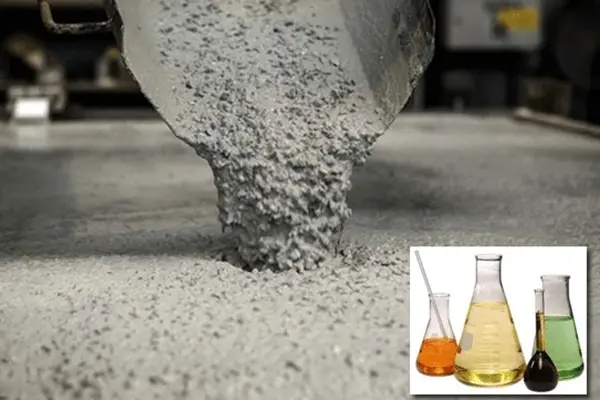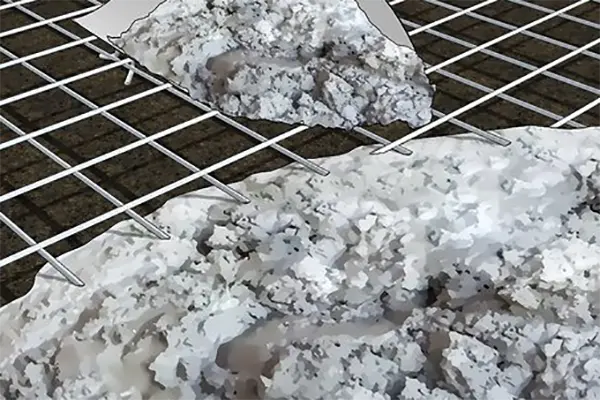Pouring concrete in cold weather presents unique challenges that can compromise the strength, durability, and overall quality of the final structure. Understanding how low temperature affects concrete hydration and setting is crucial for successful construction projects during colder months. This article delves into the world of concrete additives, specifically focusing on calcium chloride, a common accelerator used to combat the slow setting times associated with cold weather. We’ll explore its benefits, risks, proper usage, and alternatives, providing valuable insights for construction professionals, precast manufacturers, and anyone working with concrete when the mercury drops. Reading this will equip you with the knowledge to make informed decisions, prevent costly mistakes, and ensure the long-term performance of your cold weather concrete projects.
What Exactly Defines "Cold Weather" for Concrete Work?
When we talk about cold weather concrete, we aren’t necessarily referring to deep freeze conditions. The American Concrete Institute (ACI) defines cold weather conditions for concreting as a period when, for more than three consecutive days, the average daily air temperature is less than 40°F (5°C) and the air temperature is not greater than 50°F (10°C) for more than one-half of any 24-hour period. It’s important to note that it’s not just the air temperature but also the temperature of the concrete itself and the surfaces it comes into contact with that matter.
These conditions are significant because the chemical reaction responsible for concrete hardening, known as hydration, is highly temperature-dependent. Lower temperatures significantly slow down this reaction. This doesn’t just mean waiting longer; it means the concrete remains vulnerable in its early, plastic state for an extended period, susceptible to damage from freezing, reduced strength gain, and potential long-term durability issues. Understanding this definition helps construction teams recognize when special precautions, including the potential use of additives, are necessary to ensure quality.
Why is Pouring Concrete in Cold Temperatures Problematic?
Pouring concrete in cold weather introduces several potential problems that can jeopardize the structural integrity and longevity of the concrete. The primary issue is the slowing of the hydration process. Cement needs water to hydrate and gain strength, but when temperatures drop, this chemical process decelerates markedly. If the concrete mix freezes before it has achieved a minimum compressive strength (typically around 500 psi), the expansion of water as it turns to ice can cause irreversible internal damage, leading to significantly reduced final strength and durability.

Furthermore, slower setting times mean the concrete remains workable for longer, which might seem beneficial but increases the risk of surface damage, delays finishing operations, and extends the time formwork must remain in place, impacting project schedules. The extended curing time also means the concrete is exposed to potential freeze-thaw cycles for longer before it’s strong enough to resist them. These factors necessitate careful planning and often the use of concrete additives or other protective measures during cold weather construction. The goal is always to maintain an adequate concrete temperature to facilitate proper hydration and strength development.
How Do Concrete Additives Help in Cold Weather Construction?
Concrete additives, also known as admixtures, are materials other than water, aggregate, cement, and fiber reinforcement that are added to the concrete mix immediately before or during mixing. In cold weather construction, specific admixtures play a vital role in mitigating the negative effects of low temperatures. Their primary functions are often to accelerate the rate of hydration and strength gain, and some can also lower the freezing point of the mix water or improve workability without adding excess water (which would weaken the concrete).
The most common category of additive used for this purpose is accelerating admixtures. These chemical substances speed up the set time and promote early strength development, allowing the concrete to achieve sufficient strength to resist freeze damage much sooner. Other helpful admixtures might include water-reducing admixtures (or superplasticizers) which allow for lower water-cement ratios (improving strength and durability) while maintaining good workability, and air-entraining admixtures which introduce microscopic air bubbles to enhance the concrete’s resistance to damage caused by freezing and thawing cycles. Using the right concrete additives effectively allows construction to continue safely and efficiently even when facing cold weather conditions.
Is Calcium Chloride an Effective Additive for Cold Weather Concrete Mixes?
Yes, calcium chloride (CaCl₂) has long been recognized as a highly effective and economical accelerating admixture for cold weather concrete. It falls into the category of Type C accelerating admixtures according to ASTM C494 standards. Its primary function is to significantly speed up the initial and final set times of concrete and increase the rate of early strength gain, particularly at lower temperatures. This is crucial in cold weather as it shortens the period during which the fresh concrete is vulnerable to freezing.
By accelerating the hydration reaction of the cement, calcium chloride helps the concrete generate its own heat more quickly, further counteracting the effects of the cold weather. This allows finishing operations to begin sooner and reduces the required curing time and protection period. Many concrete producers rely on calcium chloride to maintain production schedules during autumn and winter months. However, while effective, its use is not without potential drawbacks, particularly concerning corrosion of embedded metals, which necessitates careful consideration and adherence to industry guidelines. The typical dosage rate is carefully controlled, usually as a percentage of the weight of cement.
How Does Calcium Chloride Accelerate the Concrete Setting Process?
Calcium chloride primarily accelerates concrete setting and hardening by influencing the hydration reactions of the main cement compounds, particularly tricalcium silicate (C₃S) and dicalcium silicate (C₂S). When added to the concrete mix, the chloride ions (Cl⁻) act as catalysts, speeding up the dissolution of these silicate phases and promoting the formation of calcium silicate hydrate (C-S-H) gel – the primary binding agent responsible for concrete’s strength. This accelerated formation of C-S-H leads to a faster set time and a more rapid gain in early compressive strength.

Furthermore, the reaction accelerated by calcium chloride generates heat more rapidly. This exothermic effect helps raise the internal temperature of the concrete, further speeding up the hydration process, which is especially beneficial in cold weather. This self-heating helps protect the concrete from freezing in its early stages. The overall effect is a significant reduction in both the initial setting time (when the concrete starts to lose its plasticity) and the final setting time (when it achieves a certain level of hardness), allowing construction work to proceed more efficiently in colder environments.
What Are the Recommended Guidelines for Adding Calcium Chloride to Concrete?
The use of calcium chloride as a concrete additive must be carefully managed to maximize benefits and minimize risks. Industry standards, such as those from ACI (American Concrete Institute) committee 318, provide strict guidance. The most critical recommendation revolves around the dosage. Calcium chloride is typically added in liquid or flake form, and the amount should generally not exceed 2% by weight of cement in the concrete mix. Exceeding this limit can lead to problems like rapid slump loss, increased drying shrinkage (potentially causing crack issues), and a significantly higher risk of corrosion of reinforcing steel.
It’s also crucial to ensure the calcium chloride is evenly dispersed throughout the concrete mix. It should ideally be dissolved in the mix water before being added to the mixer, rather than adding flakes directly to the aggregate or cement. Proper mixing time is essential to achieve uniformity. Furthermore, calcium chloride should never be used in prestressed concrete, concrete containing embedded aluminum (like conduit), concrete that will be exposed to sulfate-rich environments, or concrete subject to alkali-aggregate reactivity, due to adverse chemical reactions and durability concerns. Always consult project specifications and relevant technical guidance before adding calcium chloride.
Are There Significant Risks When Using Calcium Chloride in Concrete, Especially with Steel?
Yes, the most significant risk associated with using calcium chloride in concrete is the potential for corrosion of embedded reinforcing steel (rebar) or other metallic elements. Chloride ions (Cl⁻) are known to break down the protective passive layer that naturally forms on the surface of steel within the alkaline environment of concrete. Once this layer is compromised, corrosion can initiate and propagate, especially if moisture and oxygen are present. This corrosion leads to the formation of rust, which occupies a larger volume than the original steel, creating internal stresses that can cause the concrete to crack, spall, and ultimately lose its structural integrity.

Because of this corrosion risk, ACI 318 sets strict limits on the total chloride content in concrete, depending on the application and exposure conditions. The limit is much lower for reinforced concrete exposed to moisture or external chloride sources (like de-icing salts) than for dry, protected concrete. As mentioned earlier, its use is completely prohibited in prestressed concrete due to the high risk of catastrophic failure if the high-strength steel tendons corrode. Other potential issues include increased drying shrinkage, potential discoloration of the concrete, and reduced resistance to sulfate attack. These risks underscore the importance of using calcium chloride judiciously and exploring non-chloride alternatives when corrosion is a major concern.
Beyond Calcium Chloride: What Other Admixture Options Exist for Cold Weather?
Recognizing the corrosion risks associated with calcium chloride, the industry has developed several non-chloride accelerating admixtures (NCAs). These additives provide acceleration of set time and early strength gain without introducing chloride ions, making them suitable for reinforced and prestressed concrete, or concrete in environments where chloride-induced corrosion is a concern. Common types of NCAs include calcium formate, calcium nitrate, and various organic compounds like triethanolamine (TEA). Each has slightly different characteristics regarding the degree of acceleration, effect on later-age strength, and compatibility with other admixtures.
Beyond accelerators, other admixtures are crucial for optimizing cold weather concrete. High-range water reducers (superplasticizers) are particularly valuable. They allow for significant reductions in the water-cement ratio (leading to higher strength and durability) while maintaining or even increasing the workability of the concrete mix. This is vital in cold weather because adding extra water to improve flow drastically weakens the concrete and increases freeze-thaw susceptibility. Air-entraining admixtures are almost always essential for exterior concrete exposed to freezing and thawing, as they create a network of tiny air bubbles that provide pressure relief for freezing water, greatly enhancing durability. Sometimes, combinations of these admixtures are used to achieve the desired performance characteristics for a specific cold weather concrete application, potentially including using fly ash or slag as supplementary cementitious materials to improve long-term durability.
How Can We Maximize Concrete Durability During Cold Weather Pours?
Maximizing the durability of concrete placed in cold weather involves more than just using the right admixtures; it requires a holistic approach encompassing mix design, placement techniques, and proper curing. Firstly, the concrete mix itself should be designed for low permeability and adequate strength. This often involves using a lower water-cement ratio, which can be facilitated by water reducers or superplasticizers. Incorporating air entrainment is critical for any concrete that will expose itself to freeze-thaw cycles and de-icing salts.
Secondly, placement practices are key. The concrete should not be placed on frozen ground or against frozen forms, as this will rapidly draw heat from the mix. The temperature of the concrete as delivered and placed should be maintained within specified limits (often above 50-55°F or 10-13°C). This might require heating the mix water and/or aggregates at the batch plant. Finally, and perhaps most importantly, is curing. The concrete must be protected from freezing and kept moist (or sealed) at a suitable temperature (ideally above 50°F/10°C) for a sufficient period to allow adequate hydration and strength gain. This often involves using insulating blankets, heated enclosures, or specialized curing compounds. Adherence to these practices, alongside the appropriate use of concrete additives, is essential to ensure long-term durability.
What Are the Best Practices for Using Any Concrete Additive in Colder Conditions?
Whether using calcium chloride or non-chloride alternatives, several best practices apply to using concrete additives effectively and safely in cold weather. Firstly, always follow the manufacturer’s recommendations regarding dosage rate, mixing procedures, and potential interactions with other admixtures or cement types. Overdosing or underdosing can lead to unexpected and undesirable effects on the concrete’s properties. Compatibility testing is often advisable, especially when using multiple admixtures or unfamiliar material combinations.
Secondly, ensure accurate batching and uniform dispersion. Liquid admixtures should generally be added with the mix water, while powdered additives need careful handling to avoid clumping and ensure even distribution throughout the concrete mixture. Proper mixing time is crucial. Thirdly, remember that admixtures are not a substitute for proper cold weather concreting practices like temperature control and curing. Accelerators help, but they don’t eliminate the need to protect the concrete from freezing, especially during its early, vulnerable stages. Monitoring the concrete temperature at the job site and during curing is essential. Lastly, good communication between the concrete producer, testing facility, and the construction team is vital to ensure everyone understands the properties of the concrete mix being used and the necessary precautions.
Does Mortar Also Benefit from Cold Weather Additives like Calcium Chloride?
Yes, mortar, like concrete, is based on hydraulic cement (cement that hardens through reaction with water) and its setting and strength gain are similarly affected by cold weather. Therefore, mortar used for masonry work (laying bricks or blocks) or stucco applications during cold weather can also benefit from the use of accelerating additives. Calcium chloride can be used in mortar to speed up setting and hardening, allowing masonry work to proceed more quickly and reducing the risk of freeze damage to the fresh mortar joints.
However, the same precautions regarding calcium chloride apply, perhaps even more critically. Mortar joints often contain metal ties or reinforcement connecting masonry units or anchoring veneers, and these metals are susceptible to chloride-induced corrosion. Therefore, the use of calcium chloride in mortar that is in contact with embedded metals is generally discouraged or heavily restricted by building codes and industry standards. Non-chloride accelerators are often the preferred choice for mortar in these situations. Additionally, practices like heating the mortar sand and water, and protecting the completed masonry work from freezing (e.g., using enclosures or insulating blankets) remain essential for quality construction in cold weather, regardless of whether an additive is used in the mortar mix. The goal is to ensure the mortar achieves sufficient strength and bond before being subjected to freezing temperatures or load. Using quality components, whether it’s the cement, sand, water, or additive, is crucial for both concrete and mortar performance. For specialized applications like Autoclaved Aerated Concrete, specific components like high-quality aluminum pastes for aerated concrete are essential, demanding similar attention to quality control as any additive. This attention to detail extends to finished products like ALC Wallboard and lightweight AAC Block construction, ensuring overall project success. Working with a reliable Professional Water-based Aluminum Powder Slurry Factory ensures consistency in such specialized materials.
Key Takeaways for Cold Weather Concrete Success:
- Understand "Cold Weather": Defined by ACI as average daily temps below 40°F (5°C) for 3+ days. Low temperatures significantly slow concrete hydration and strength gain.
- Additives are Tools: Accelerating admixtures like calcium chloride or non-chloride alternatives speed up set time and early strength, reducing vulnerability to freeze damage. Water reducers and air entrainment also play vital roles.
- Calcium Chloride: Effective and economical accelerator, but poses a significant corrosion risk to embedded steel. Use is restricted (max 2% by weight of cement) and prohibited in many situations (e.g., prestressed concrete).
- Non-Chloride Alternatives: Available for situations where corrosion is a concern (e.g., reinforced concrete, mortar with metal ties).
- Dosage is Critical: Always follow manufacturer recommendations and industry standards (strict limits exist for chloride content). Ensure proper mixing.
- Holistic Approach: Admixtures supplement, but don’t replace, essential cold weather practices like heating materials, preventing placement on frozen surfaces, and proper curing (insulation/heating) to maintain adequate concrete temperature.
- Mortar Needs Care Too: Mortar is also affected by cold; additives can help, but corrosion risks for embedded metals must be considered. Non-chloride options are often safer.
- Focus on Durability: Use low water-cement ratios, ensure proper air entrainment for freeze-thaw resistance, and protect the concrete until sufficient strength is achieved.
Post time: 4 月-22-2025




